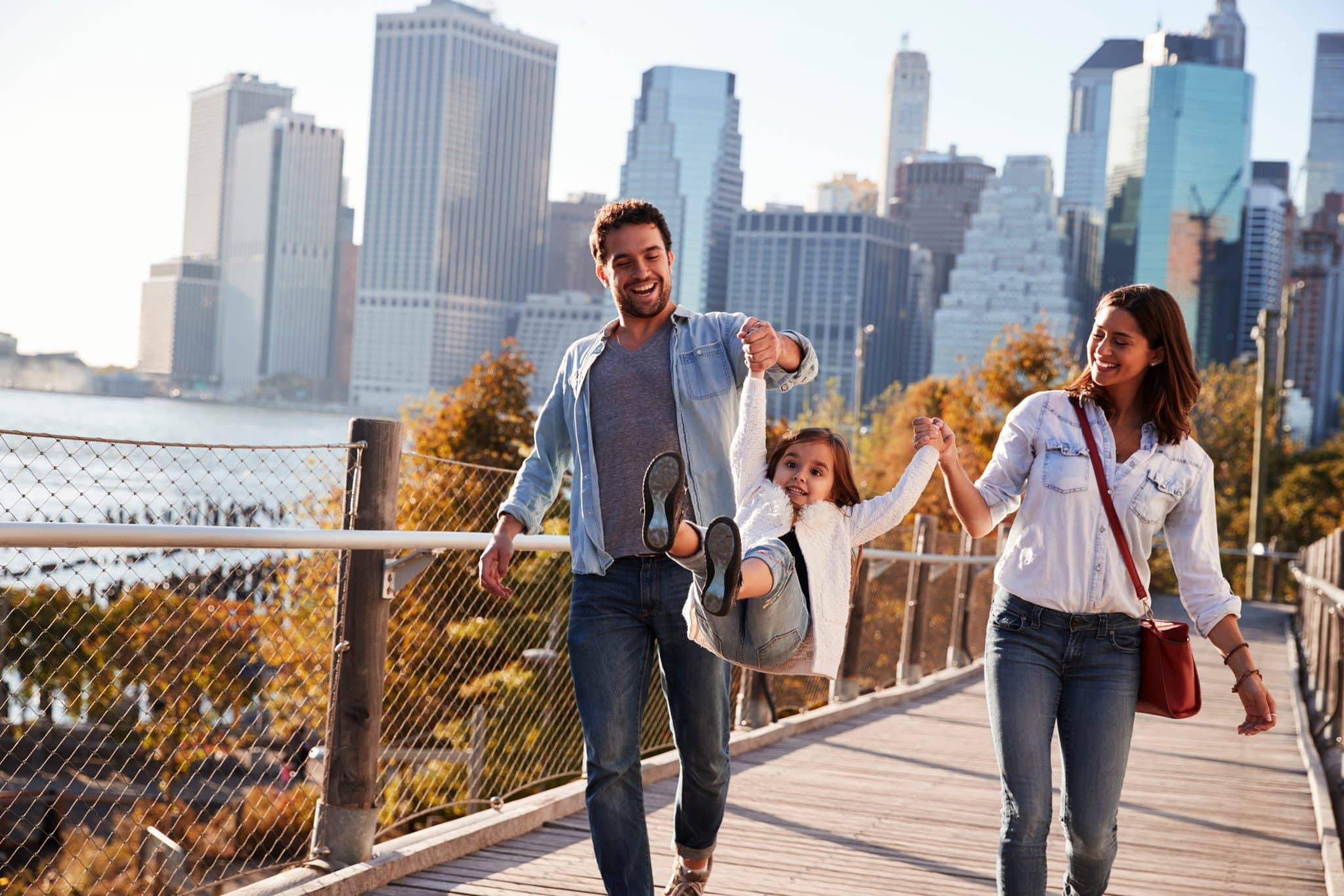After years, decades, or even a lifetime in the city – and now considering the suburbs? We’ve got you covered.
Moving to the suburbs is a big change for anyone. But if you’ve spent your entire life in New York City, moving to the suburbs can feel like being thrown off the deep end. Suburban Jungle Strategist – and city lifer – Eleanor Johnson can relate.
“I’m a city girl at heart,” says Eleanor. “But, when I try to imagine what our lives would have been like if we had stayed, I’m glad we made the move.”
Now, Eleanor works with other urbanites looking to make a move to suburbia – some who have been in the city for years, decades or even, like Eleanor, for their entire lives. “I always tell clients the most important step is to spend some time thinking about your priorities and what you love about the city before starting your suburban search. Once you have your ‘non-negotiables’ set, it’s easier to find the perfect town that fits your lifestyle – or, maybe, you decide to stay put in the city. That happens, too!”
For city dwellers, though, who are ready to explore suburbia, Eleanor says a few must-haves tend to pop to the top of the list. That includes:
#1. Walkability
“I said, ‘I’m not moving to a town if I have to get into a car every day,’” says Eleanor. “And a lot of my clients say the same thing. Maybe they grew up in the city and don’t drive or don’t have a car. That’s OK. Plenty of communities are extremely walkable. So let’s start there!”
We hear it all the time: city-lifers don’t want to give up walkability when moving to the ‘burbs. The good news is there are tons of walkable suburbs in every market. And even if the entire town isn’t walkable, there are plenty of walkable neighborhoods in the NYC suburbs.
“If running errands on foot is a priority, keep that in mind when exploring different towns,” Eleanor suggests. “Park your car and see what it’s like to walk around. Check out different neighborhoods or ask your Suburban Jungle Strategist how often people in the town rely on their cars to get around. Maybe a town isn’t as walkable, but they have a shuttle to take you to the train. Or maybe certain neighborhoods are more walkable than others. Just ask – we’re here to help!”
#2. Food Scene
City lifers are used to having endless dining options at their doorsteps. And while some suburbs may not be as jam-packed with global cuisine, the dining scene outside of the city has never been better – and that’s a win for everyone.
We’re also seeing popular NYC restaurants and award-winning chefs make the leap. Case in point: Fat Choy, an American-Chinese vegan restaurant that relocated from the Lower East Side in New York City to the New Jersey suburb of Englewood and was named one of the most exciting restaurants by The New York Times.
If the food scene is important to you, eat out when you explore different towns. Ask your Suburban Jungle Strategist or locals you meet about their favorite places to dine in town.
“I was so surprised at the incredible restaurant scene in the suburbs – and it keeps getting better!” Eleanor says. “I had pictured fast food and chain restaurants. Not the case at all. You can find anything here.”
#3. Arts & Culture
The arts and culture scene in the suburbs is thriving. From renowned museums and lush gardens to theaters, concert halls, galleries, and more, there’s so much to do, no matter where you land.
“If the arts are important to your lifestyle, consider looking for a college town,” Eleanor recommends. “Universities host lectures and cultural events open to the public, not just students – plus they tend to have amazing libraries, galleries, and even museums, right in the community.” Montclair and Princeton in New Jersey are good go-to university towns, as are Bronxville and Purchase in Westchester County.
#4. Getting in the Mix
“I worried about making friends in the suburbs,” Eleanor admits. “It felt like, in the city, we had a built-in community – our kids’ schools, our building, our neighborhood, everywhere.”
Like in the city, there are countless ways to make friends. For families with kids, that often starts at the school level.
“It could be walking to school or going to pick up and drop off every day, and getting to know your kids’ classmates,” Eleanor says. “Or even waiting at the bus stop and meeting your neighbors. I always recommend volunteering at school or at school events – your kids can help steer you to new friends and classmates and, next thing you know, you’re making connections.” Kids’ sports, she says, can be the same.
Another good go-to? Many towns have newcomers clubs that host book clubs, wine nights, and other events to help new residents meet each other. Volunteering, joining a gym or run club, or chatting with people at the dog park are other ways to start connecting to the community.
“If you have a dog, you’ll meet people!” she says. “Fellow dog walkers, people at the dog park or dog beach, pet-friendly outdoor restaurants…everywhere!”
#5. Trains to the City
If access to the city is non-negotiable, make sure the towns you’re exploring have a train station or are an easy drive to the city.
“We looked at towns within a 45-minute train ride,” Eleanor says, of her own suburban search. “To us, that made sense. If you’re going in every day you may want something shorter. If you go in once or twice a week, maybe you’re OK being on the train for an hour or two. With so many people working from home, the search area has gotten so much bigger which opens up tons of possibilities for people searching.”
Ready to make the move to the suburbs, but not sure where to start? Schedule a Strategy Session today. Our team of Strategists is here to help you find the suburb that fits your lifestyle and priorities.

